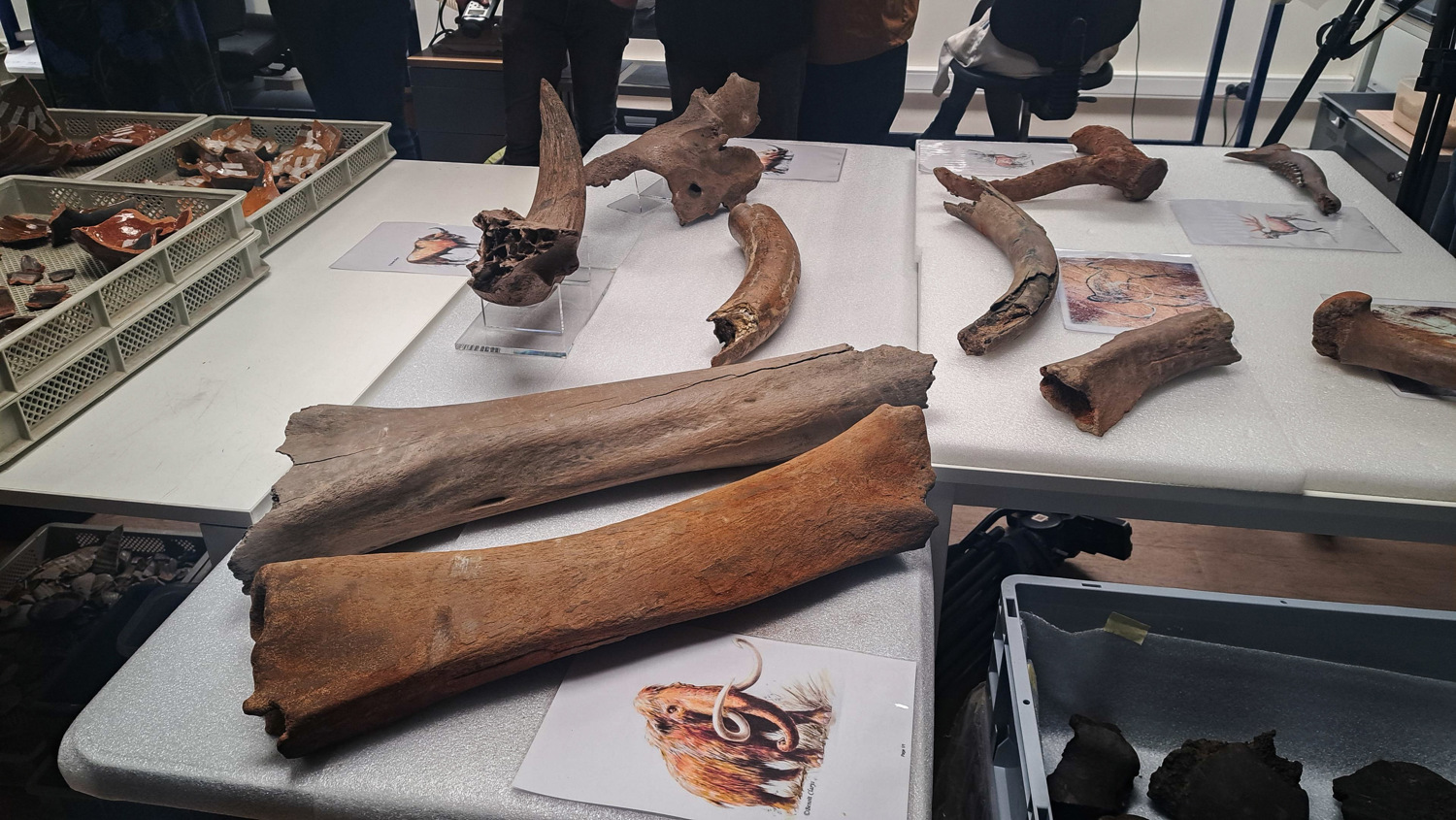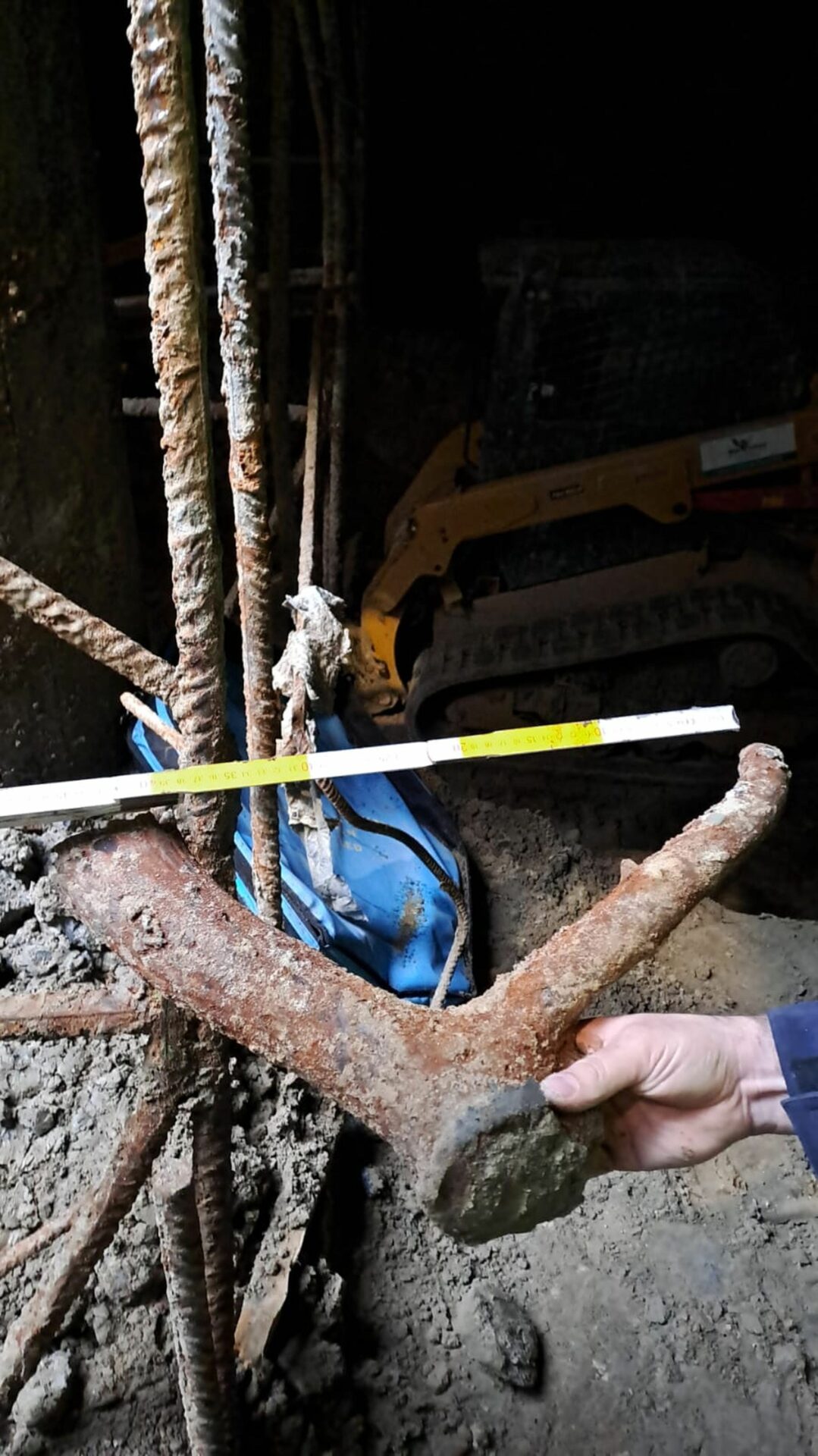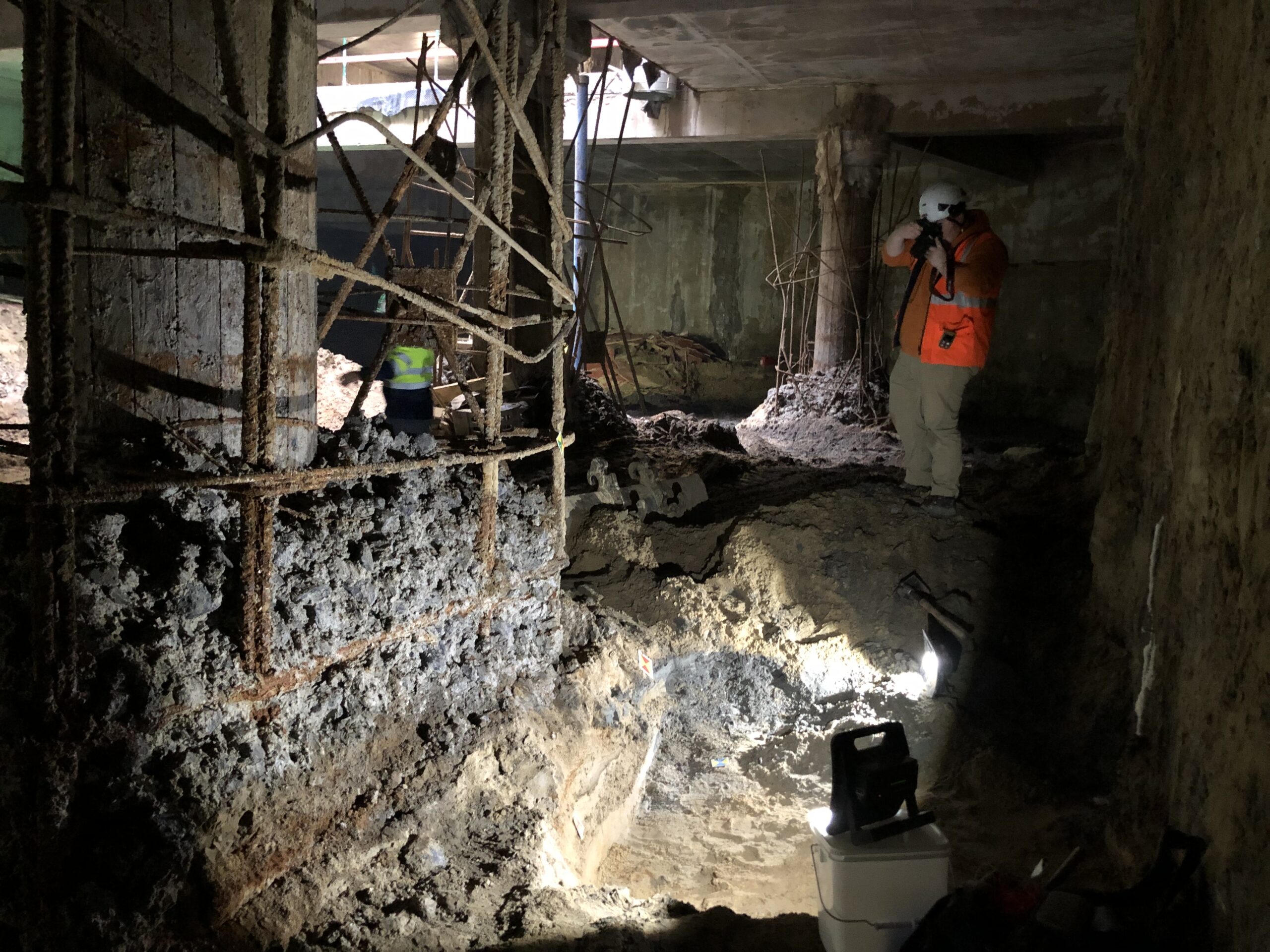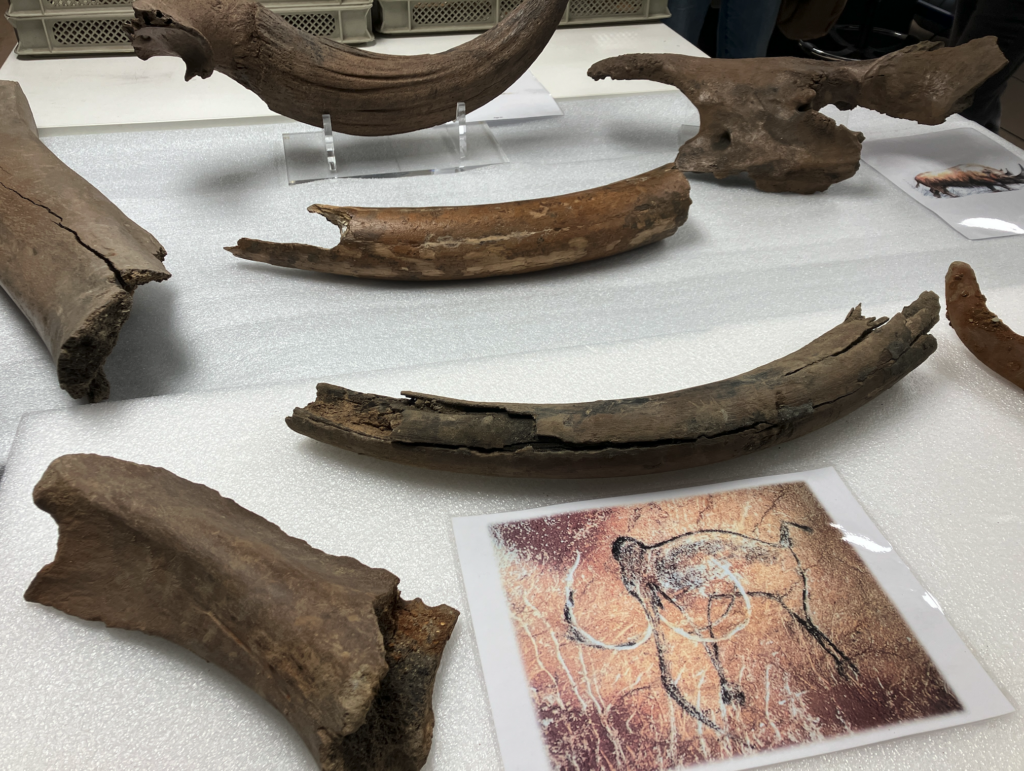An exceptional discovery has been made during archaeological excavations on the construction site of Metro 3 in Brussels, which surfaced bones from the Palaeolithic era.
Just one week since the theory of "Snow White" being buried under the Brussels Bourse was uncovered – more historical wonders have been found during the dig.
During urban.brussels' preventive excavations at the construction site for the Toots Thielemans station for Metro 3, teams of archaeologists discovered the remains of a mammoth and a red deer at a depth of 8 to 9 metres.

The two mammoth femurs are located at the front of the table. Behind it lies a tusk. Credit: Belga
"These past few days have been very exciting because several major finds were being made every day," Ans Persoons, Brussels Secretary of State for Town Planning and Heritage told The Brussels Times. "It is unique to discover so many extraordinary objects in one sitting."
The works on the metro line offer a rare opportunity to dig deeper in Brussels. Discoveries of prehistoric fauna mainly occur during major works such as the construction of metro lines, such as is the case for Metro 3, but also when very deep underground car parks are being made.
Tusks and femurs
During the works on Metro line 3, archaeologists are working closely with public transport operator STIB during the digs.
"We always take part in the digging of such deep sites because we know there is a possibility to discover such findings," said Ann Degraeve, Head of the Department of Archaeology at urban.brussels. "For us specialists too, this is a unique find, as we don't see this many objects in one place very often."
In recent days, two mammoth femurs were found. "There are two pieces but we know they are not from the same individual but from two animals as one is quite a bit larger than the other," Bea De Cupere, archaeozoologist at the Royal Institute of Natural Sciences, said.
A fragment of a mammoth tusk was also found at the same site. It too is smaller, meaning it is probably from a female mammoth.

The antlers were founds at the same site. Credit: Ans Persoons Cabinet.
Antlers of a red deer – which they eject every year – and the lower jaw of a red deer or megaloceros (giant deer) were also dug up. De Cupere said these date back to the last Ice Age (about 120,000 to 11,700 years ago), but as there are no associated artefacts, only radiocarbon dating will be able to give a more precise dating.
The bones are currently being analysed in the laboratory and will soon be sent to the Royal Belgian Institute of Natural Sciences for final identification and appropriate treatment to preserve them.
Historic hotspot
In the past, bones of woolly rhinos and other prehistoric bones of animals such as mammoths, deer and bison (all believed to be around 30,000 years old) were found around the Boulevard Anspach and Midi station, in the silt of what was the bed of the Zenne. The remains of these animals, species that typically lived in these regions in the last Ice Age, are mostly found at a depth of 8 to 12 metres.
Due to the large number of rare findings found in this location, it can be considered an archaeological hotspot. Works for the Toots Thielemans metro station by STIB will continue in the same area and at the same depth until March 2024.

Archaeologists at the site of the works on Metro line 3. Credit: Ans Persoons Cabinet.
Because of the archaeological potential, the urban.brussels archaeologists will pay particular attention to this area, a process that will have no effect on the timeframe for the construction works and when they will be finished.
"We expect to find more as the digging goes on," said Degraeve and De Cupere. In the coming days and weeks, they may find more objects like bones or tusks of similar animals.
They both stressed that the remains that have already been found are key in the process of understanding the Palaeolithic history of Brussels.
For this reason, the region is already thinking about a way to display these prehistoric remains to the general public. "Once the analysis and protection measures are complete, we will look to exhibit these, either in the new station itself or maybe in the Museum of Natural Sciences," Persoons said.
"We have to showcase this find because it tells stories from Brussels' past. Just like the theory of Snow White, this finding appeals enormously to the imagination. If you present it in the right way, it's a way to get adults and children interested in history," she concluded.

